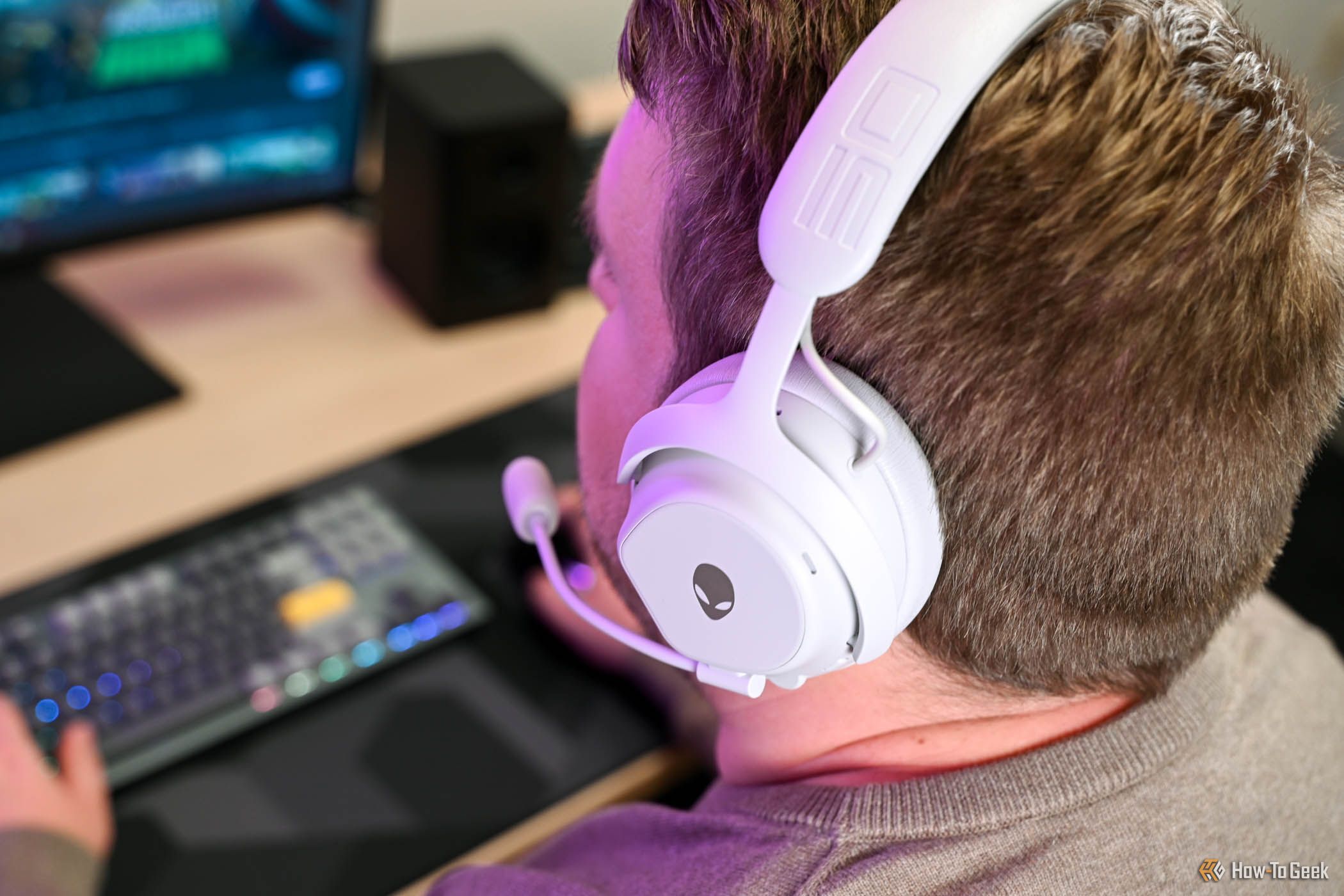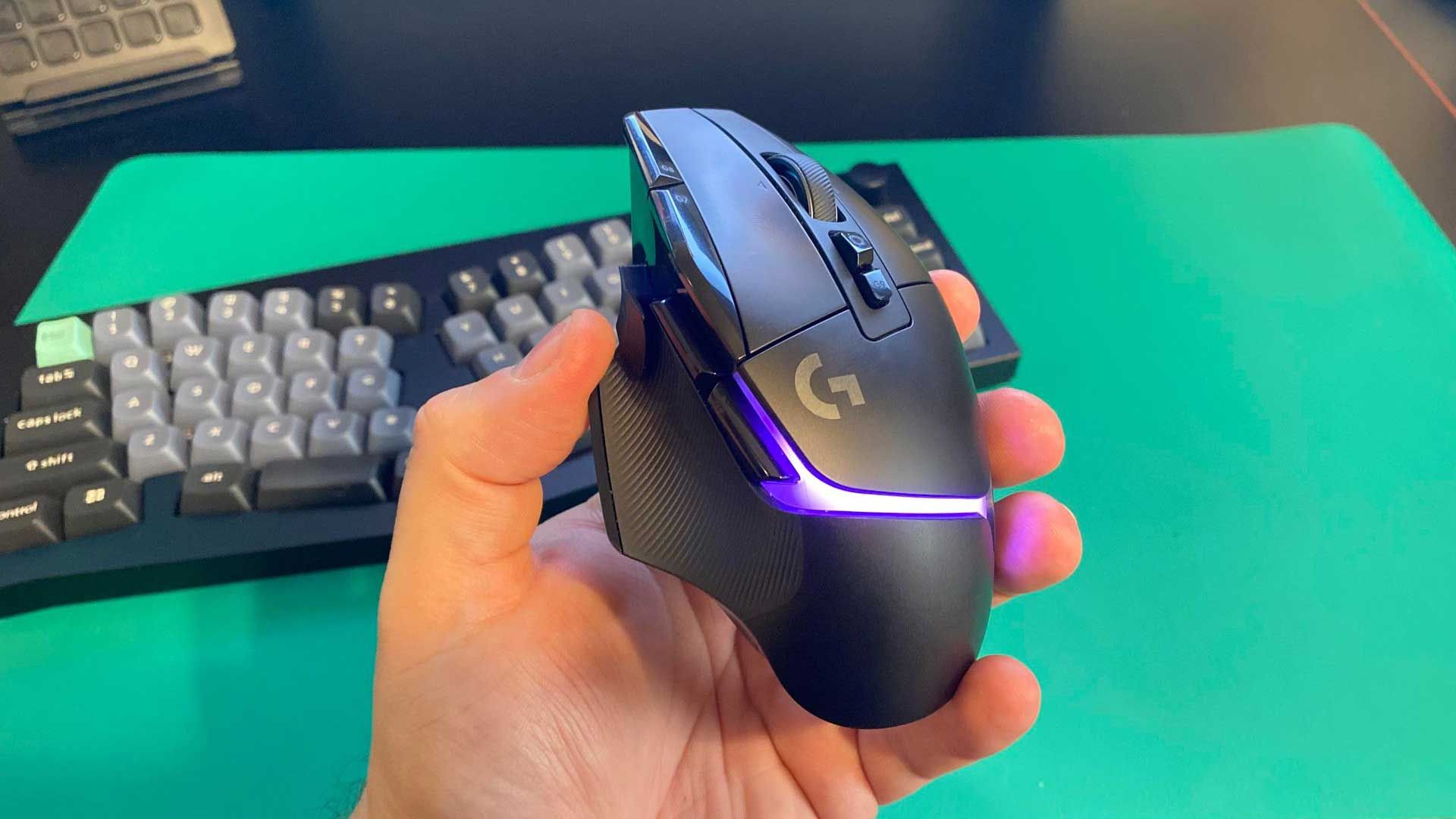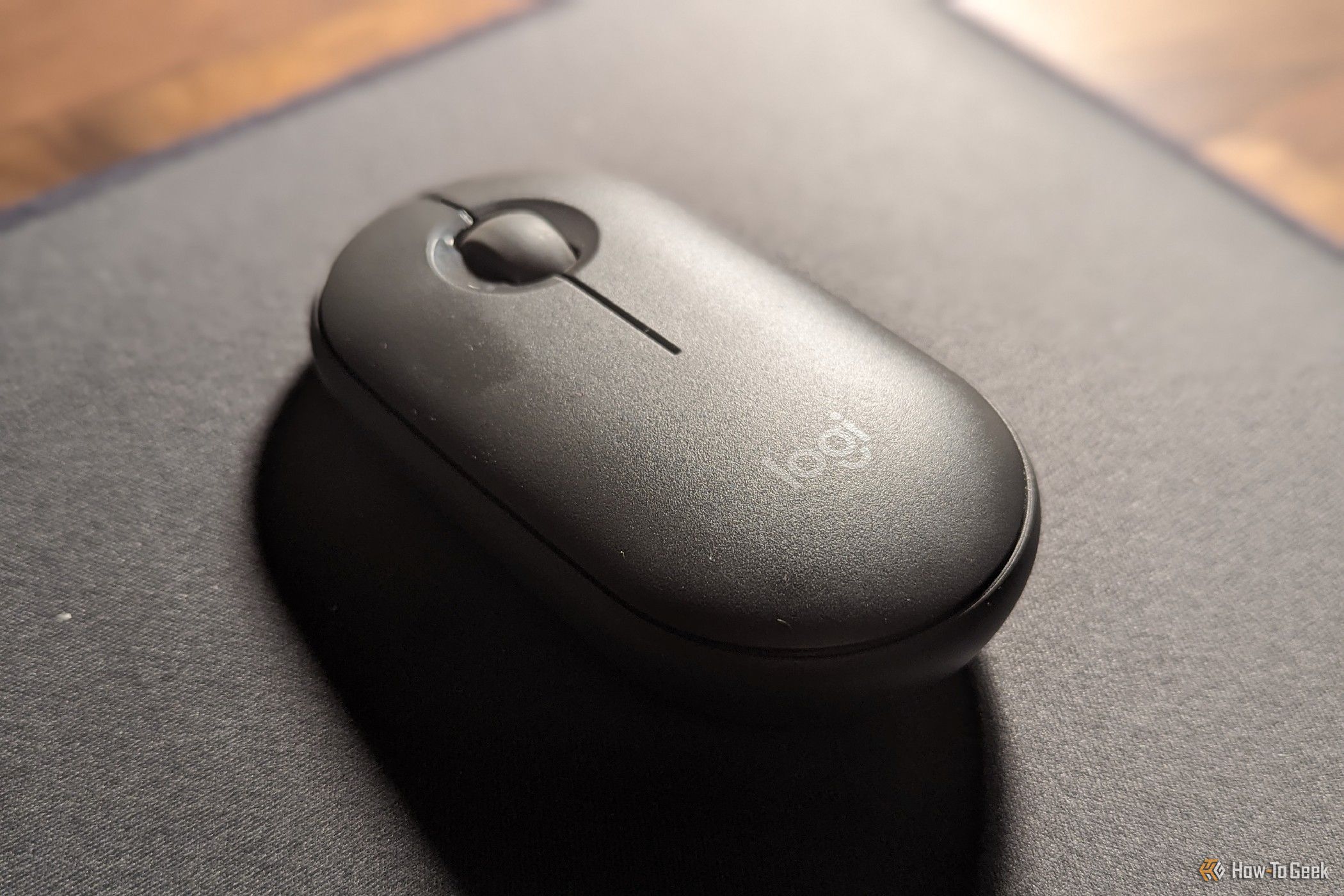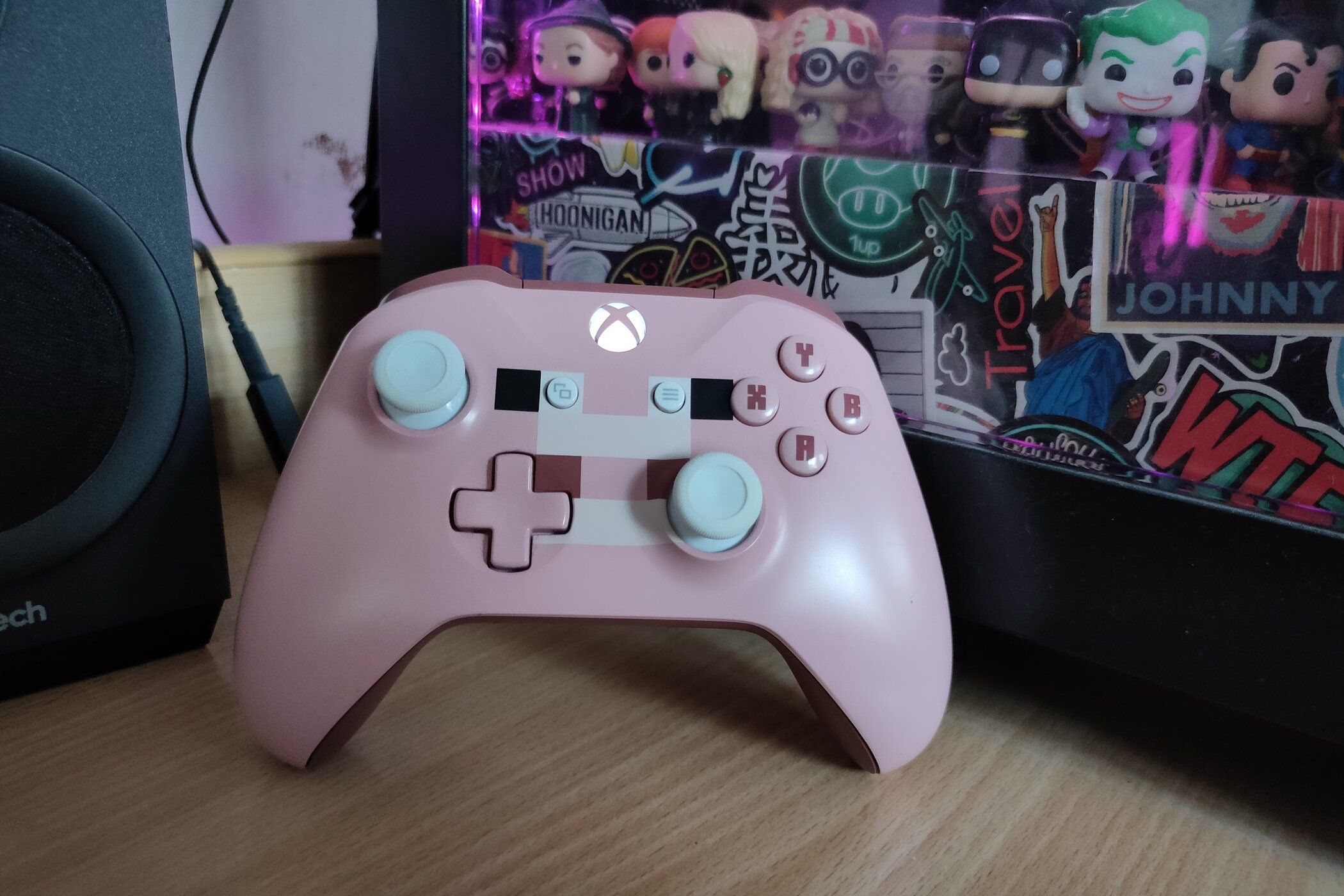When it comes to wirelessly connecting your peripherals to your computer, you have two primary options: a 2.4GHz dongle or Bluetooth. If you’re only familiar with Bluetooth, you might be wondering what this dongle is even for—there’s a reason it exists. Let’s go over the pros and cons of each.
How Is 2.4GHz Different From Bluetooth?
Let’s start by clarifying what 2.4GHz actually means in the context of computer peripherals. It refers to a type of proprietary wireless technology called USB-RF, where devices like mice and headsets use a small USB dongle to connect to your computer. Unlike Bluetooth, this 2.4GHz connectivity is specific to each manufacturer. In fact, some manufacturers, like Logitech, have multiple 2.4GHz “standards” with varying levels of compatibility, but we’ll touch on that later.
You’ll typically find 2.4GHz in gaming-focused peripherals as a way to provide a better and more responsive experience thanks to higher bandwidth and latency optimization. For instance, Bluetooth only supports a maximum polling rate of 125Hz (the mouse reports its position 125 times a second), which translates into a delay of 8ms. In contrast, many 2.4GHz devices support 1,000Hz, with some recent models, like the Razer BlackWidow V4 Pro, reaching over 4,000Hz.
Although Bluetooth also operates on the 2.4GHz frequency spectrum, it prioritizes short-range low-power connectivity, resulting in significantly lower bandwidth and higher latency compared to proprietary 2.4GHz connections. An analysis by RTINGS paints a clear picture: 2.4GHz is both faster and more consistent than Bluetooth when all other factors are equal.
2.4GHz Has One Massive Flaw
While 2.4GHz is objectively better than Bluetooth in many ways, it has one glaring issue: it’s all proprietary. Each manufacturer uses its own 2.4GHz technology, which only works with their devices. So, if you have a Logitech mouse, Razer keyboard, and SteelSeries headset, you’ll need three separate 2.4GHz receivers to connect everything. And if you’re using these devices with a laptop, you might not even have enough USB ports to connect everything at once.
Okay, so what? If you don’t mind limiting your selection, you can get everything from the same manufacturer. However, even then, there are caveats, such as compatibility issues between different dongles and peripherals.
For instance, if you want to use Logitech’s gaming-oriented 2.4GHz Lightspeed connection, you can connect two Lightspeed devices to a single Lightspeed keyboard receiver. If you have a Lightspeed mouse and headset, you’ll still have to use two separate Lightspeed receivers. Yet, somehow, Logitech has managed to complicate things even further. Older Logitech models use the 2.4GHz dongle or the Unifying Receiver, whereas newer models use Logi Bolt.
Moreover, if you lose one of these proprietary 2.4GHz receivers or it stops working outside warranty, replacing it is quite expensive. Unlike Bluetooth dongles, you have to buy an original replacement dongle, and it often has to be the exact model that works with your device. For instance, the Logitech G502 X Lightspeed dongle currently costs $31.99 on Amazon. The Razer Blackshark V2 Pro headset receiver is even more expensive at $40.99.
Bluetooth Is Universal but Limited
Most devices around us support Bluetooth, and for those that don’t, you can easily add support with a cheap Bluetooth dongle. I use a $3 Bluetooth dongle on my PC, and it works flawlessly with my keyboard, earbuds, and Xbox controller. Provided you don’t go over the bandwidth limit, you can use multiple devices simultaneously via Bluetooth; no dongles are required.
It’s a simple, easy-to-use, and familiar interface. You can get a Bluetooth mouse and keyboard, which you can then use with your PC, laptop, phone, tablet, and TV without having to worry about dongles. Those of us who have forgotten a 2.4GHz dongle while on the go know the frustration of having a device but being unable to use it. On top of that, Bluetooth is more energy efficient than 2.4GHz, meaning you can easily go days or even weeks without charging your mouse or headphones.
However, while Bluetooth is fine for most people, some of the time, it’s not ideal. First, it suffers from higher latency, making it unsuitable for serious gaming. While I use Bluetooth for my controller and single-player games, I would never use it in competitive games like Marvel Rivals or first-person shooters.
Additionally, Bluetooth has around half the range, which can be problematic on wireless controllers or if you like walking around the house while chatting with friends on Discord using your wireless headset.
Speaking of headsets, Bluetooth suffers from worse audio quality compared to 2.4GHz due to the significantly lower bandwidth. While some Bluetooth codecs promise solid sound quality, they still pale in comparison to proprietary 2.4GHz technologies. This is compounded by the somewhat noticeable delay, which can spoil the experience in rhythm games. You can forget about playing Osu! or Piano Tiles via Bluetooth.
Which Wireless Technology Should You Use?
Firstly, if your device comes with a 2.4GHz dongle, there’s really no reason not to use it in favor of Bluetooth. It has better range, performance, and reliability, as it’s less prone to signal dropouts and interference. If you’re a gamer, forget about using Bluetooth. While it’s fine for casual use with a wireless controller, 2.4GHz is simply the better option.
However, if you just need something for the office, there’s a good chance you won’t even notice the difference between 2.4GHz and Bluetooth, especially when it comes to mice and keyboards. What you will notice is the improved battery life. For example, the Logitech Signature M550 promises a 2-year battery life on a single AA battery. For context, I have to charge my Logitech G502 Lightspeed every two weeks (though I also have RGB enabled).
Whether you opt for Bluetooth or 2.4Ghz, you should know that it’s a congested spectrum. Your Wi-Fi router, microwave, and smart home devices all use 2.4GHz. To get the best performance from your wireless devices, keep the dongle as close as possible and within line of sight.
When Possible, Buy Devices That Support Both
If you want to get the superior performance of 2.4GHz but also need something that works universally with any Bluetooth-enabled device, look for peripherals that support both options. It’s already common in wireless mechanical keyboards, but we’re starting to see it in mice and headsets as well. That way, you’ll always have an extra way to connect the device. Even if you lose the dongle, you can continue using it via Bluetooth in a pinch until a new dongle arrives.








